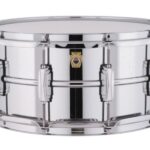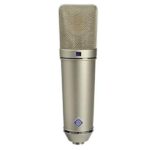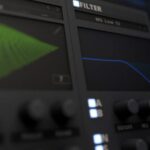The Roland Juno series has a rich history that has greatly influenced the world of synthesizers.
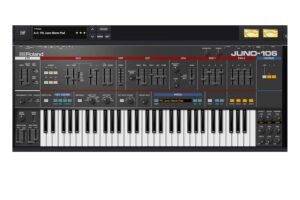
Introduced in the early 1980s, the Juno lineup was pivotal in making analog synthesis more accessible to musicians.
The Juno-60, released in 1982, was renowned for its warm analog sound and intuitive interface.
It set the stage for the Juno-106, which arrived in 1984 and introduced the iconic chorus effect that became synonymous with its sound.
These synthesizers quickly gained popularity among artists across genres and are cherished for their distinctive character.
Let’s briefly compare the Juno-60 and Juno-106, exploring their features, sound, and reputation in greater detail.
Features
Juno-60
The Juno-60 is equipped with 61 keys and offers 6-voice polyphony, allowing for the simultaneous playing of six notes.
It features a Digitally Controlled Oscillator (DCO) per voice, which provides stable and precise tuning.
The Juno-60 also includes a Voltage-Controlled Filter (VCF) for shaping the timbre of the sound, a Voltage-Controlled Amplifier (VCA) for controlling the volume, and an arpeggiator for creating rhythmic patterns.
Juno-106
Similar to the Juno-60, the Juno-106 boasts 61 keys and 6-voice polyphony. It also features a DCO per voice, ensuring accurate tuning.
In addition to the DCO, VCF, VCA, and arpeggiator, the Juno-106 incorporates chorus effects, which became one of its defining characteristics.
The built-in chorus adds a lush, spatial quality to the sound, enhancing its depth and widening the stereo field.
Comparison of Features
Similarities Between the Two Models
The Juno-60 and Juno-106 share several core features, such as the 61-key keyboard and 6-voice polyphony, providing similar playing capabilities.
They also both utilize DCO technology, offering stable tuning across all voices.
Additionally, they feature VCFs and VCAs for sound shaping and control and arpeggiators for creating rhythmic patterns.
Distinctive Features of Each Model
While the Juno-60 and Juno-106 share many similarities, they also have distinct features that set them apart.
The Juno-60 lacks the chorus effects found in the Juno-106, resulting in a cleaner and more straightforward sound.
On the other hand, the Juno-106’s built-in chorus adds a lush and spacious quality, making it highly sought after for its rich, textured soundscapes.
The chorus effect contributes to the Juno-106’s unique sonic signature and is often considered its standout feature.
By understanding the shared features and unique characteristics of the Juno-60 and Juno-106, one can better appreciate each synthesizer’s subtle nuances and sonic possibilities.
Sound
Sound Characteristics of the Juno-60
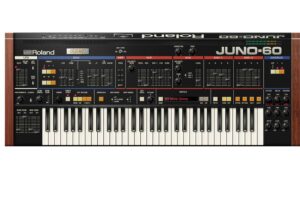
The Juno-60 is celebrated for its distinct sound qualities.
It is known for producing a warm and lush analog sound, characterized by its rich harmonic content and smooth tonal characteristics.
The Juno-60 carries a vintage vibe, evoking a sense of nostalgia with its classic analog tones.
Its sound is often clean and straightforward, making it well-suited for a wide range of musical genres and applications.
Sound Characteristics of the Juno-106
The Juno-106 shares similarities with the Juno-60 but also brings its own unique flavor to the table.
It offers a sound reminiscent of its predecessor, with elements of warmth and analog richness.
However, the Juno-106 tends to have a slightly brighter and punchier character, adding a touch of additional presence and energy to the sound.
The standout feature of the Juno-106 is its built-in chorus effects, which contribute to its distinctive sonic signature.
The chorus adds depth and stereo widening, making it particularly popular for creating lush pads, dreamy textures, and atmospheric sounds.
Comparison of Sound Qualities
When comparing the sound qualities of the Juno-60 and Juno-106, it becomes apparent that each model has its own sonic strengths and unique characteristics.
The Juno-60’s warm and lush analog sound, combined with its vintage appeal, appeals to those seeking a classic and timeless tonal palette.
Its clean and straightforward nature lends itself well to various musical genres and applications.
On the other hand, the Juno-106 retains many of the desirable qualities of the Juno-60.
Still, it introduces a brighter and punchier tonal character. Adding the chorus effects opens up new sonic possibilities, adding depth and stereo width to the sound.
This makes the Juno-106 particularly well-suited for creating textured pads, atmospheric layers, and vibrant synth leads.
Regarding applications and popular uses in music production, the Juno-60 and Juno-106 have found their place in diverse genres, including pop, electronic, synth-wave, and ambient music.
The Juno-60’s vintage charm and versatile sound make it a go-to choice for many producers and musicians, while the Juno-106’s chorus effects and dynamic tonal range contribute to its popularity in creating captivating and immersive soundscapes.
Reputation
Juno-60’s Reputation in the Synthesizer Community
The Juno-60 has established a stellar reputation as a classic and highly sought-after synthesizer.
Its distinctive sound and analog charm have made it a staple in the synthesizer community.
Many musicians, producers, and collectors value the Juno-60 for its warm, lush tones, vintage character, and versatile sonic capabilities.
It has favored various genres, including pop, electronic, new wave, and ambient music.
Notable artists such as Jean-Michel Jarre, Duran Duran, and Vince Clarke have utilized the Juno-60 in their music, further contributing to its esteemed reputation.
Juno-106’s Reputation in the Synthesizer Community

Similar to its predecessor, the Juno-106 enjoys a highly regarded reputation among synthesizer enthusiasts.
It has gained popularity as a go-to choice for musicians and producers seeking a versatile and reliable analog synthesizer.
The Juno-106’s chorus effect is often cited as one of its standout features, adding a lush and immersive quality to its sound.
Its user-friendly interface and straightforward controls have also contributed to its widespread appeal.
The Juno-106 has been embraced across genres and has found its place in countless recordings, cementing its status as a beloved and popular choice in the synthesizer community.
Considerations and Concerns
While both the Juno-60 and Juno-106 have earned their places in synthesizer history, there are certain considerations and concerns that prospective buyers should be aware of.
One prominent issue associated with the Juno-106 is the potential for voice chip failures.
Over time, the voice chips used in the Juno-106 can develop problems, leading to voices dropping out or malfunctioning.
This issue has impacted the availability and reliability of used Juno-106 units, and it is essential to thoroughly inspect or seek professional servicing when purchasing a used unit.
The presence of voice chip failures in the Juno-106 may influence the purchasing decisions of individuals looking to acquire this model.
It is advisable to research the condition of the unit, seek repairs if necessary, or consider alternative options to ensure a satisfactory and reliable instrument.
Conclusion
The Roland Juno-60 and Juno-106 stand as iconic analog synthesizers that have significantly impacted the world of music production.
The Juno-60’s warm analog sound, vintage charm, and Juno-106’s punchier tone and signature chorus effects have cemented their places in the synthesizer community.
The Juno-60’s classic reputation and association with notable artists across genres highlight its timeless appeal.
Meanwhile, the Juno-106’s user-friendly interface and versatile sound continue to make it a highly regarded choice.
Despite the concerns surrounding voice chip failures in the Juno-106, both synthesizers offer unique sonic possibilities and remain sought after by musicians and collectors alike.
Whether you prefer the Juno-60’s clean and straightforward sound or the Juno-106’s lush textures, exploring these synthesizers is sure to inspire and elevate your music production journey.

